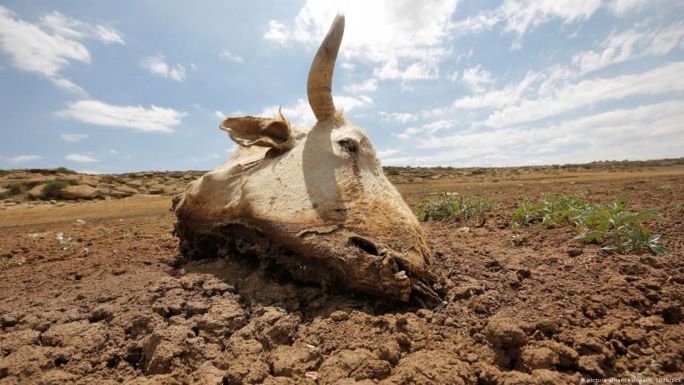El Nino-induced droughts, more than 7m Zimbabweans need food aid, says Official
 More than 7 million Zimbabweans require food aid following an El Nino-induced drought this year, a senior government official said on Friday.
More than 7 million Zimbabweans require food aid following an El Nino-induced drought this year, a senior government official said on Friday.
“After our assessment, about six million (Zimbabweans) in communal areas and 1.7 million in urban areas need food aid.
“ So as the government, we need to intervene and ensure that all these people have food secure,” Obert Jiri, permanent secretary in the Ministry of Lands, Agriculture, Fisheries, Water and Rural Development, said in the state-run Herald newspaper.
U.S. unveils new global food security strategy plan for Nigeria
Jiri said in an interview with the newspaper that the government wants the private sector to step up imports to augment local supplies.
This week, a cabinet minister revealed that Zimbabwe needs to import about 1.1 million tons of grain to cater to the food-insecure people until March 2025.
In April, President Emmerson Mnangagwa declared a state of disaster, saying the country requires over two billion U.S. dollars to respond to the El Nino-induced drought.
IFRC reports that El Niño events bring different disaster risks to different parts of the world.
They can cause severe drought in Australia, Indonesia, parts of southern Asia, Central America and northern South America. When the last El Niño occurred seven years ago, it contributed to drought and food insecurity that affected tens of millions of people across southern and eastern Africa.
IFRC also reports that El Niño and La Niña change the way that air and moisture move around the world, which can affect rainfall and temperature patterns globally.
The World Meteorological Organization (WMO) recently announced that El Niño conditions have developed, and that we can expect disruptive weather and climate patterns and a rise in global temperatures.
We know from past events when and which areas of the world are more likely to be wetter and drier during El Niño and La Niña. But no two El Niño and La Niña events are the same, so it’s important to keep track of forecasts as they develop.











